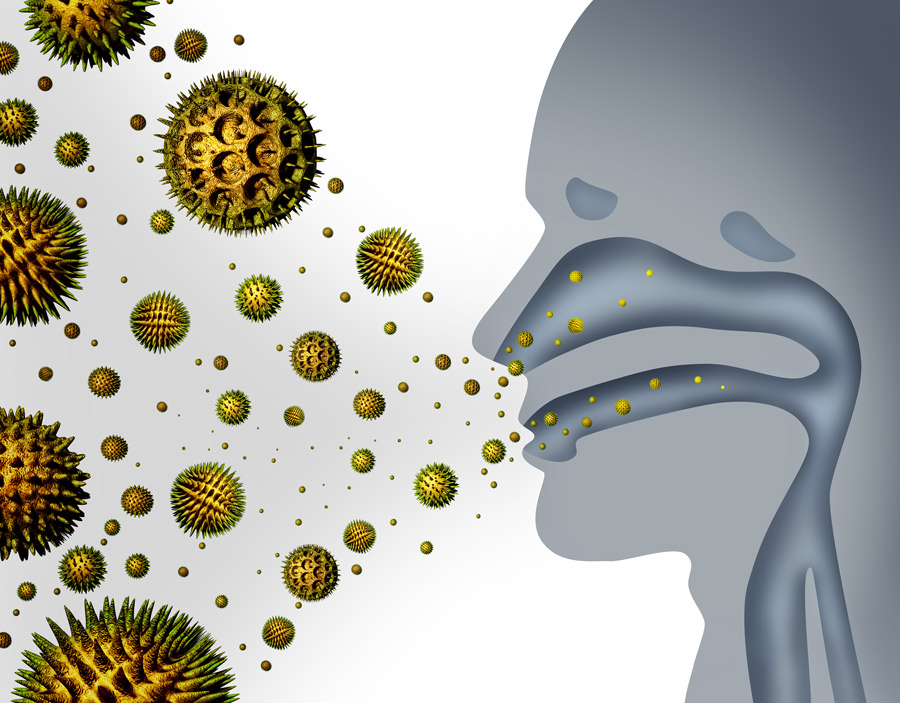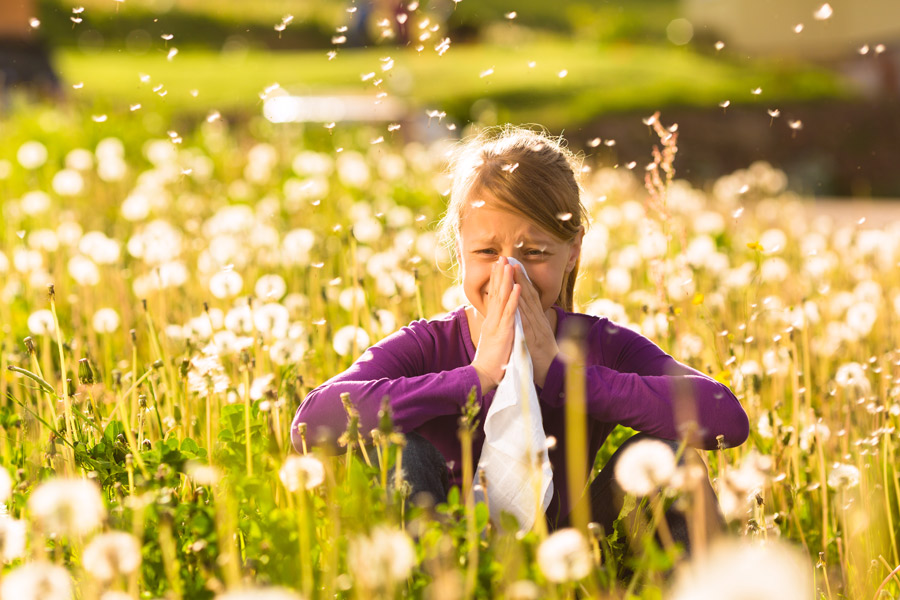Pollen: Surviving the hay fever season
The temperature is rising, the ice cream van is playing a merry tune, children are playing in the garden, and a warm summer breeze floats in through the window bearing – for some – a payload of pollen that will set off a chain reaction that leads to hay fever – runny noses, itchy eyes, and bouts of sneezing.
Hayfever is almost as common as the common cold, with one in five people suffering from it at one point or another in their life. But what is hay fever, why does it affect some and not others, and what does the latest science say about this seasonal disease?
Hayfever: Somewhat allergic
Hay fever is the more colloquial term for allergic rhinitis. It happens when tiny environmental allergens come into contact with your nose and/or eyes. Commonly associated with the warmer months and the increased amount of pollen in the air, hay fever can actually occur at any time since it can be triggered by dust mites, mould, or even your pet cat’s dander.
We are constantly breathing in tiny particles, but luckily our noses filter out the bad stuff before it enters our systems – including those environmental allergens. The hairs and mucus inside your nose trap the pollen, dust, and other particles before they reach your lungs. However, some people are allergic to these particles, leading the body to believe that it’s under attack. The body starts creating antibodies to fight off the infection, thus leading to the dreaded symptoms of hay fever – itchy eyes, a runny nose, and a sneeze that won’t stop. As the hay fever season wears on, this constant irritation causes inflammation and leads to discomfort.
Climate change and hay fever
The incidence of hay fever is growing all over the world, which may be related to rising temperatures. As temperatures creep up, the growing season of many plants lengthens and the amount of pollen a plant can produce will also increase.

One study carried out by a research team from the University of East Anglia focused on common ragweed, a plant native to North America that has spread to almost every continent on the planet. Its pollen is highly allergenic, meaning that ragweed is one of the major causes of hay fever in many sufferers – a single plant can produce millions of grains of pollen, leading to many irritated noses and itchy eyes.
The researchers believe that, if ragweed continues to spread at its current rate, the number of people whose hay fever is linked to its pollen could reach 77 million people by 2050 – and that climate change is a significant factor in this jump. The increase will mostly be felt across northern Europe as warmer temperatures lead to a longer growing season for ragweed.
Although you might think that hay fever would be worse in rural areas with their preponderance of pollen-producing plants, a study from the University of Manchester actually reports the opposite. Results from the study show that people who live in towns and cities self-report much worse hay fever symptoms than their village-dwelling counterparts.
The incidence of hay fever is growing all over the world, which may be related to rising temperatures.This novel study compared symptom reports from 2016 to 2020 and cross-referenced pollution levels with the symptoms reported by the 700 participants in the study. According to analysis of the data, symptoms were about twice as bad in urban areas in comparison to rural ones, and the severity of the symptoms correlated with ozone levels. High levels of ozone in the atmosphere – often associated with air pollution – has also been linked to other respiratory problems aside from hay fever.
Relief
Hay fever is an uncomfortable fact of life for many that stretches throughout the summer months and can cost a country billions in lost productivity as employees take time off to manage their symptoms.

Many people feel that hay fever is not something ‘bad enough’ to bother a doctor with, and prefer to manage their symptoms at home, although ongoing symptoms should be discussed with your GP as there are medications which can help.
One old wives’ tale to manage hay fever is to eat a teaspoon of local honey every day in the hope that you’ll become desensitised to the pollen. Unfortunately this isn’t the case, as the pollen found in honey is flower-based, and as such is not the sort of pollen that causes hay fever!
There are, however, some easy fixes for managing hay fever symptoms that you can incorporate into your daily routine:
- Dry laundry inside to avoid unnecessary pollen getting caught in the fibres.
- Shower before bed to remove any pollen that may be caught in your hair or on your skin.
- Shut the windows, especially when the pollen count is high.
- Keep hydrated and think about using a humidifier to keep your eyes and skin hydrated too.
- Take antihistamines and speak to a medical professional if your symptoms worsen!
References
W: manchester.ac.uk/discover/news/people-in-urban-areas-have-worse-hay-fever-symptoms-analysis-suggests/
W: onlinelibrary.wiley.com/doi/10.1111/all.12470